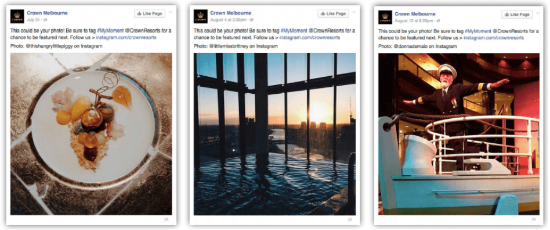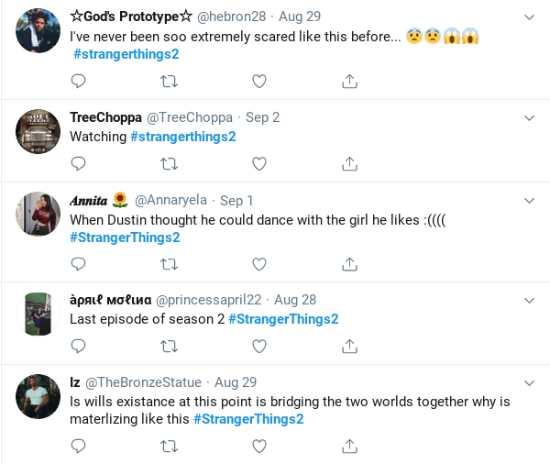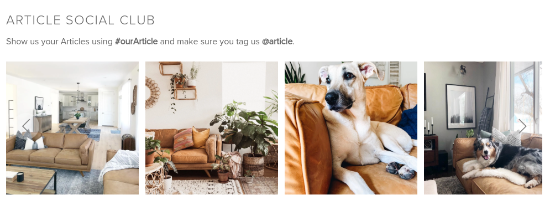In today’s era of flooded online markets, a constant feed of advertisements, and public reviews, people have become more and more selective of who they listen to when making purchasing decisions. Of course, the most trustworthy sources are the people closest to you.
In fact, 83 percent of consumers say that they look to their family and friends for recommendations about products and services.
From a marketing standpoint, this is some pretty exciting news if you know how to leverage word of mouth. One of the best ways to do so is through user-generated content (UGC).
What Is User-Generated Content? Your Most Overlooked Strategy
Any content about a particular product or service that comes from a consumer is considered user-generated content. They usually take the form of online media, like photos, videos, and blogs.
There’s a pretty nice list of benefits that comes with introducing UGC into your marketing strategy:
- Build credibility using social proof: Your users publicly sharing the benefits of your product or service shows consumers that your word is good.
- Save time and resources by leveraging happy customers: UGC acts as a free source of content for your social media marketing strategy.
- Gather insights and learn how to improve personalization: Your customers are given a platform to tell you their honest opinions of your goods and how you can improve.
- Reach new audiences: All of that UGC is posted in hashtag feeds and shared within each individual user’s social network. That’s a lot of new eyes on your brand.
The best way to create great UGC effectively is to study awesome examples of those who did it well.
15 User-Generated Content Examples to Inspire You
The number of channels you can use to leverage UGC is only limited by the number of social channels that exist. Let’s see how brands are making the most of them across the board.
1. Reebok
Reebok does a great job of demonstrating how partnering with influencers can be advantageous when it comes to social reach.
Collaborating with 2016’s Fittest Woman on Earth, Katrín Tanja Davíðsdóttir, they get to market to her 1.6 million followers when she posts about using their clothes during training.
View this post on InstagramDon't limit your challenges. Challenge your limits. #BeMoreHuman @katrintanja
A post shared by Reebok (@reebok) on
They posted simultaneously with the CrossFit athlete for maximum exposure, tagging her in the photo and using the same hashtags as her own post. Those who follow and respect her as a CrossFit athlete will see that she reps Reebok.
The hope is that they will in turn become interested in learning more about Reebok apparel.
2. Tuft and Needle
There’s ample opportunity to leverage emotional marketing as well as word of mouth on social media. Check out Tuft and Needle’s spotlight of Waffles.
View this post on InstagramThis is Waffles. 11/10 cuteness, 3/10 helpfulness in making the bed.
A post shared by Tuft & Needle (@tuftandneedle) on
Dogs are incredibly popular on social media. There’s no sales pitch, no direct CTA, just a cool highlight that Waffles (who is gorgeous, by the way) and his owner using T&N products.
Dog parents may be in the market for a new mattress to cuddle their pooches, so this post is incredibly relevant to a niche market that may not have been searching Tuft and Needle’s catalog before.
3. Tito’s
It’s not always dogs and world-renowned athletes that provide voices for brands. Tito’s encourages local businesses to post about how they use their products. They even aid in hosting live events, like this one.
View this post on InstagramA post shared by Pier6 Boston (@pier6boston) on
Regulars of the waterfront restaurant will be excited to come to a fireworks show and eat some good food, all of which is sponsored by Tito’s. It’s a great way to support local business and generate a positive reputation at the same time.
4. Lululemon
One of the most popular yoga clothing brands in the market today, Lululemon jumped on the idea of asking their users to be brand ambassadors in 2013 with the unique hashtag #thesweatlife.
The campaign calls for consumers to post pictures of themselves in Lululemon attire on Instagram, demonstrating just how cool “the sweat life” can be. And boy did their audience respond.
View this post on InstagramA post shared by @ leahbearyoga on
There are thousands of posts similar to this one that are a direct reply to the brand’s campaign. Six years later and the hashtag is still associated with the company.
5. Aerie
Aerie has done something different with their #AerieReal campaign.
In an effort to combat the negative impact that excessively edited photos posted social media have on women’s self-esteem, the clothing company has pledged to stop retouching photos of their models.
That’s already a huge move for such a large brand that sells swimsuits and intimates, but they took one step further. For every unedited Instagram post that a user puts up using the hashtag #AerieReal, Aerie will donate $1 to the National Eating Disorders Association (NEDA).
The response to the company’s decision to think beyond social media and harmful beauty standards has been largely positive. See what Carrie Ann had to say about the movement.
View this post on InstagramA post shared by Carrie Ann (@joyfullyrare) on
6. Wayfair
#WayfairAtHome has helped the furniture store get both client reviews and generate business at the same time. Here’s how Wayfair does it:
By reposting this customer’s post (using the hashtag, of course) Wayfair has been able to highlight how their products helped transform this bathroom.
They tag the customer, leveraging social proof and a testimonial, and then add links to the products in the photo for easy shopping for viewers who like the look. Genius, right?
7. Starbucks
You’ve probably seen the #RedCupContest circulating in your social feeds around the holidays. That’s all a part of Starbucks’ crafty giveaway campaign of generating exposure and some extra seasonal sales at the same time.
Serious coffee aficionados get excited over the chance to win a loaded Starbucks gift card in a contest where all they have to do is post a photo of their red coffee cup, which can easily be found at any of the gazillion Starbucks cafes during the month of December.
View this post on InstagramA post shared by Carrah Aldridge (@creative_carrah) on
Using a contest to both bump coffee sales and drive word of mouth online has been working successfully for the company for years. The power of a giveaway.
8. Boomf
Staying in line with fun, wholesome content, Boomf, who create exploding presents, has created a UGC machine on Instagram by asking users to post product experiences.
What exactly does their content look like?
View this post on InstagramThe award for biggest Flutter jump goes to...🏆 🦋 😂 #Boomf #sendmorethanacard
A post shared by Boomf (@boomf) on
It’s a simple campaign, but incredibly effective. There’s a lot of joy in sending someone a confetti card.
Those are joyous moments that your users are excited to share and can generate goodwill toward your brand. It’s certainly worked for Boomf.
9. Crown Resorts
Crown Resorts, a gaming and entertainment company, has leveraged the true value of user-generated content platforms. Working with Stackla, the company searches for UGC on Instagram.
Through the platform, they’re able to gain permission to use their choice of photos to use in ads on Facebook.

Source: Econsultancy
With the tagline “This could be your photo,” they are able to show the authenticity of the social proof, advertising real customers as their greatest advocates.
10. Netflix
The streaming giant has put a lot of resources into cranking out more and more original content for its user base. In return, Netflix relies on viewers to generate buzz around series and season premieres.
In 2017, when Stranger Things’ second season premiered, Twitter shared that the show was the “most tweeted-about streaming show” that year, generating 3.7 million tweets.

Source: Twitter
Now that’s some UGC power.
The wave of tweets introduced the show to people who may not have been familiar with it beforehand, promoting more views of season one as people raced to catch up.
11. National Geographic
You wouldn’t expect a brand known for its breathtaking photos to source from user-generated content. But National Geographic knows that consumer engagement is just as important as producing branded content.
In 2016, the #SunriseToSunsetContest campaign began, asking world travelers to post photos of unique sunrises and sunsets using the hashtag.
View this post on InstagramA post shared by Chris Brinlee Jr (@chrisbrinleejr) on
The brand successfully outsourced content from followers while simultaneously inspiring travelers to go out and explore the world, hunting for that perfect sunrise or sunset.
12. Warby Parker
The highly regarded glasses company, Warby Parker, understands the value of authenticity in their content strategies. A lot of their user-generated content comes from happy customers, like this little one.
View this post on InstagramStages of a #warbyhometryon: 😮🤪😀😬😂 (Photos by @mama__rachie.)
A post shared by Warby Parker (@warbyparker) on
This is an excellent example of social proof, and it's also an opportunity to showcase a few product styles as well.
13. Whole Foods
For companies who already have a cult following, like Whole Foods, custom hashtags are a great means of gathering UGC and sparking word of mouth. With the tag #WholeFoodsHaul, consumers and influencers post what’s in their cart as they shop at the popular grocery store.
Whole Foods leverages the sort of “elite” culture that’s been sparked online around their brand. Capitalizing on the surge of healthy, clean eating, they executed a successful campaign to get people into their stores and bolster their presence online.
14. Everlane
Everlane is a clothing retail company that knows the power of partnering with influencers. A lot of their UGC comes from Instagram personalities with large followings because they know how brand desire works.
An audience of young women may not have been interested in wide legged pants or a cropped jacket until they saw popular lifestyle influencer @noelleandfox in that outfit.
View this post on InstagramA lesson in summer dressing by @noelleandfox. 🕊
A post shared by Everlane (@everlane) on
The company was clever in their presentation. They didn’t advertise what the pieces were until someone asked, and then answered them in the comments.
This raises their engagement rates, fosters customer curiosity, and creates a much more minimalistic approach to marketing (since people are less and less responsive to ads).
15. Article
Article has taken an entirely new approach to online shopping by implementing UGC into its catalog.
When exploring through their vast furniture selections, you may find that different pieces have an interesting feature on their product pages like the one below.

Source: Article
Included on the page of one of their tan, leather couches, Article shares how past customers have decorated their spaces with that particular piece of furniture. Right below it is a listing of customer reviews, all largely positive.
There’s no better way to prove your products’ quality than to have your users do it for you. Written reviews are great, but a picture is worth a thousand words. Using the hashtag #ourArticle, new leads can be inspired to purchase Article furniture for their own homes.
These awesome user-generated content examples should get you inspired and ready to execute a campaign on your own. You know the best practices. Now start driving results.


Micah Lally
I’m a Content Writer at Bluleadz. I’m a big fan of books, movies, music, video games, and the ocean. It sounds impossible to do all of those at the same time, but you’d be surprised by the things I can accomplish.